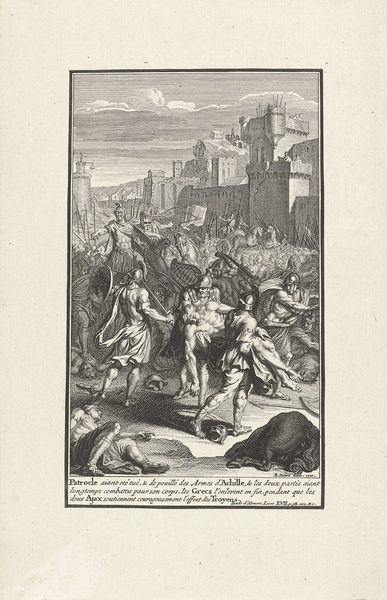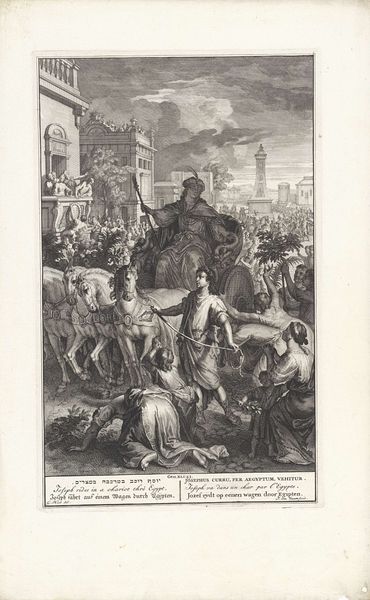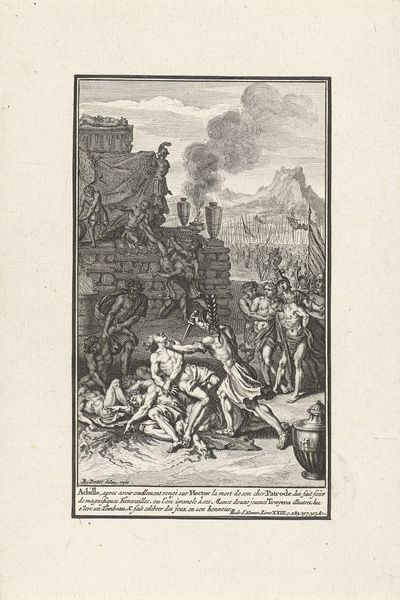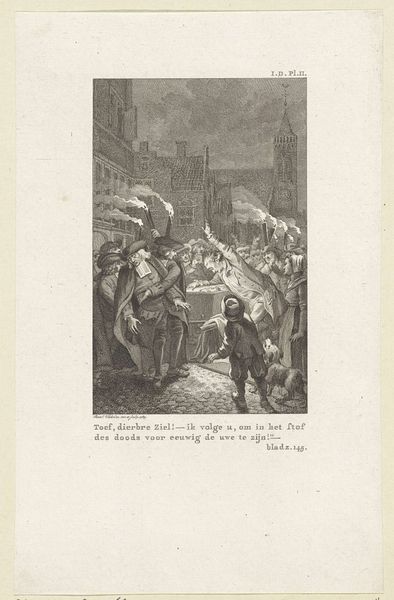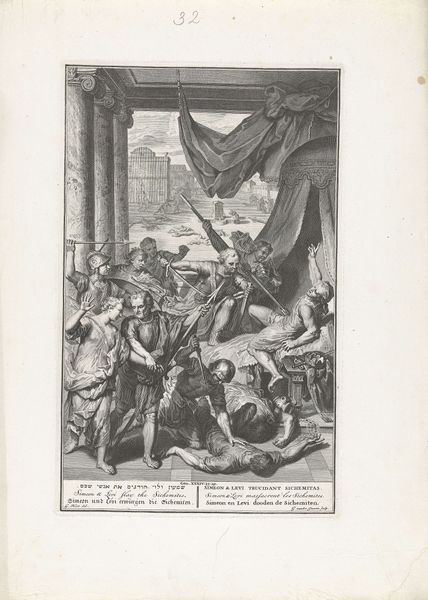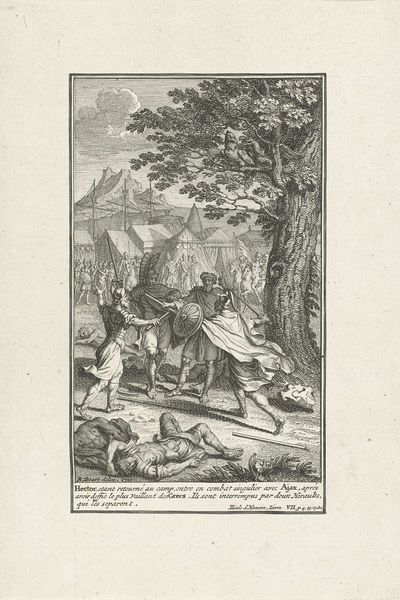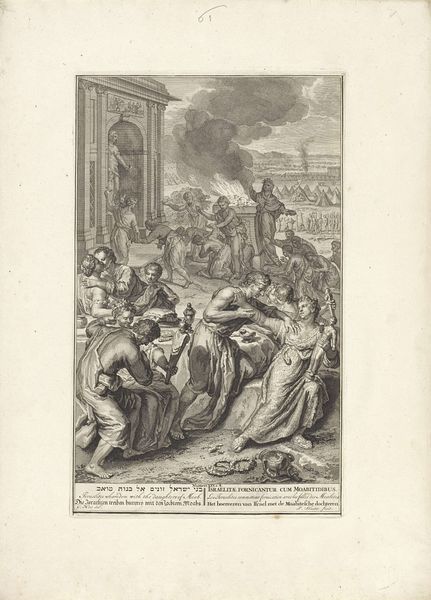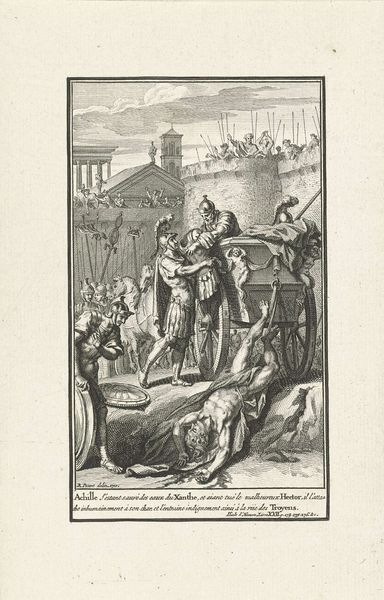
Terugkomst van de ark des verbonds uit het land der Filistijnen Possibly 1705 - 1728
0:00
0:00
pietersluyter
Rijksmuseum
print, engraving
#
baroque
# print
#
history-painting
#
engraving
Dimensions: height 357 mm, width 223 mm
Copyright: Rijks Museum: Open Domain
Curator: Let's delve into this engraving, "The Return of the Ark of the Covenant from the Land of the Philistines" by Pieter Sluyter, dating possibly from 1705 to 1728. Editor: What strikes me immediately is the stark contrast. The bottom half is dominated by dark, active figures, while the upper part has a more ethereal, almost serene quality around the ark. The use of line creates an incredible dynamism. Curator: Indeed. Sluyter's work illustrates a pivotal moment recounted in the Hebrew Bible's Books of Samuel. After the Philistines captured the Ark, its presence brought misfortune upon them, so they decided to return it to the Israelites, hence this historical, biblical scene. Editor: And the composition reinforces that narrative. The Philistines are literally and figuratively laboring below, preparing the sacrifice to appease their god, Dagon, to facilitate this return. There's a tension, even violence, in their poses compared to the reverent postures around the Ark. Notice the linear precision in their muscles, the rendering of light and shadow defining each action! Curator: The image serves as a visual interpretation of the fraught relationship between the Philistines and Israelites. It reminds the viewer of the political implications carried by even sacred objects during this era and after. Editor: I also think Sluyter’s choice of engraving is crucial here. It allows for sharp detail, enhancing the realism and the dramatic contrasts we spoke about, amplifying the image’s overall impact. Curator: This piece also underscores the significance of religious and historical narratives in early 18th-century Dutch art, reflecting societal concerns. Art then functioned as visual teaching tools for religious subjects. Editor: So it's about more than just aesthetic appreciation—it’s a mirror reflecting anxieties and power structures of the day through biblical imagery. Curator: Precisely. By exploring this engraving, we gain insight into the social and religious lenses through which such narratives were received at the time. Editor: And by looking closely at line, composition, and form, we can appreciate how Sluyter constructed this emotionally loaded representation of cultural exchange and conflict.
Comments
No comments
Be the first to comment and join the conversation on the ultimate creative platform.
